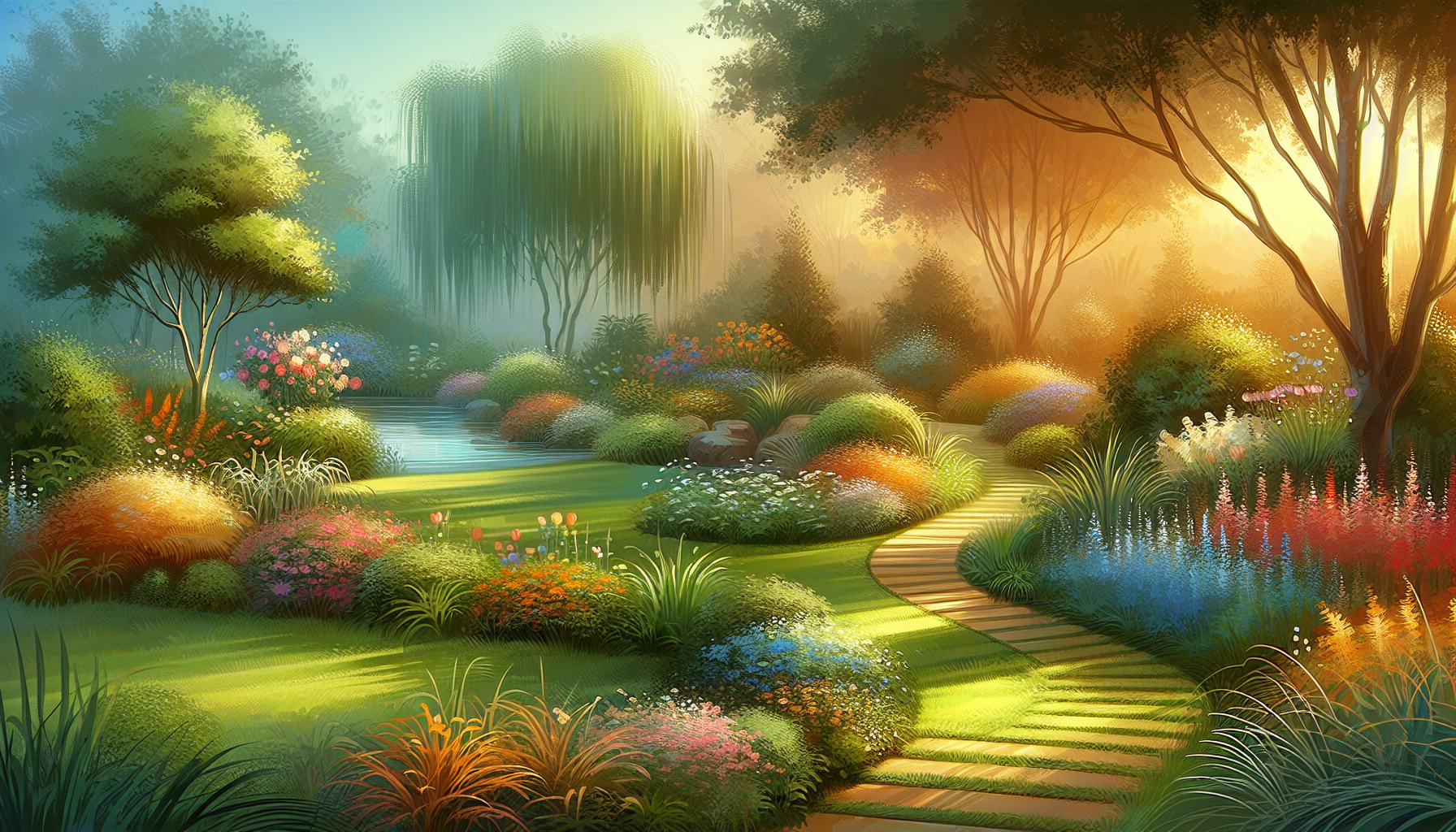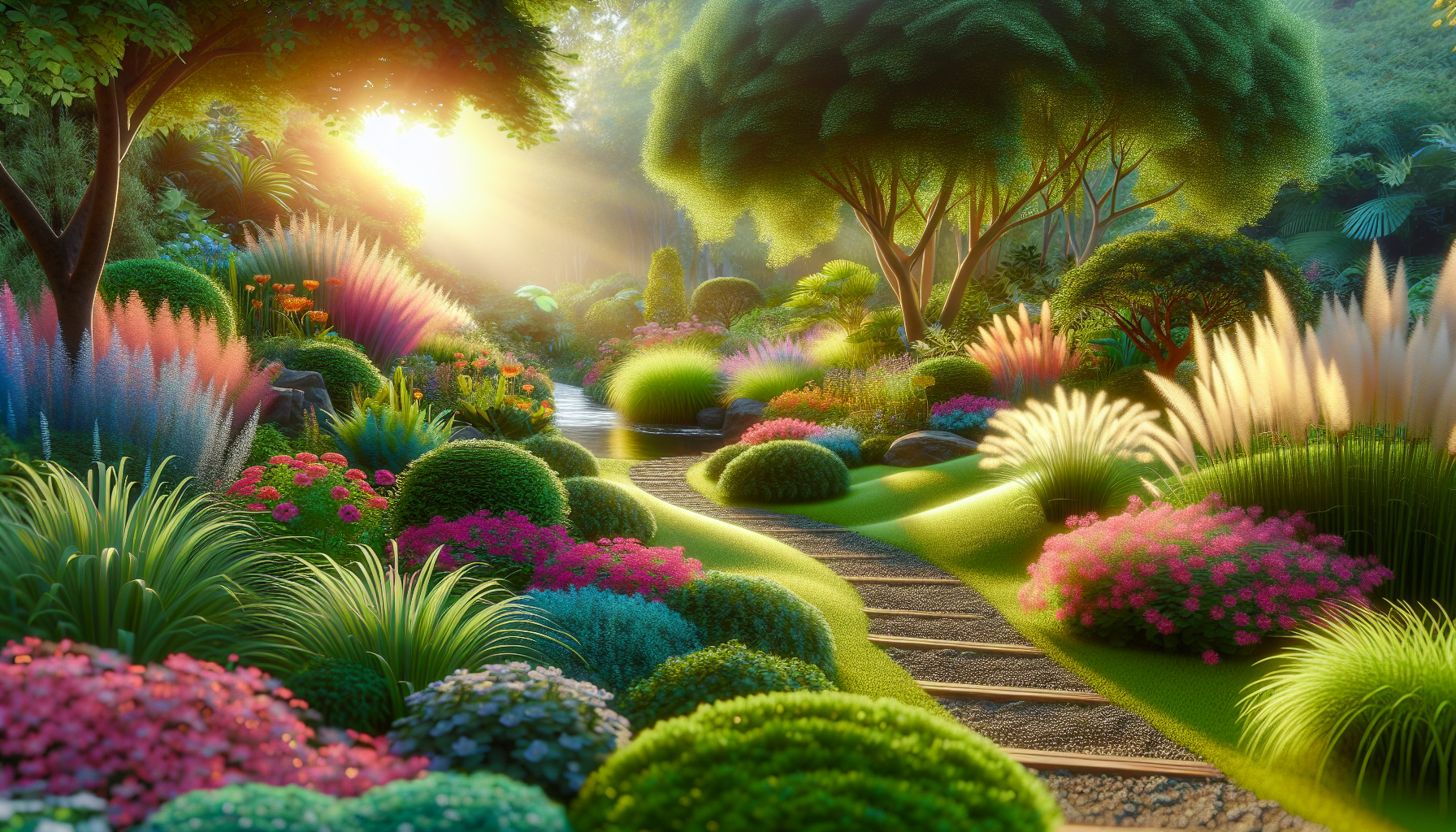What does “softscape” really mean to you? Understanding this concept can significantly impact how you approach landscaping and outdoor aesthetics.
Understanding Softscape
Softscape refers to the living elements of landscaping. This includes all the plant life, such as flowers, shrubs, trees, and grass, that contribute to the overall beauty and functionality of your outdoor space. Unlike hardscape, which consists of non-living elements like stones, bricks, and walkways, softscape gives life and vibrancy to your surroundings.

Importance of Softscape
Softscape plays a crucial role in enhancing the aesthetics of a property. It influences not only the visual appeal but also the functionality of outdoor spaces. Plants can provide shade, improve air quality, and promote a calming atmosphere. Moreover, a well-planned softscape can add value to your property, making it more attractive to potential buyers.
Components of Softscape
Let’s break down the main components that make up softscape:
Plants and Flowers
Plants and flowers are at the core of softscape. They come in various shapes, colors, and sizes. Choosing the right variety for your climate and soil type is essential. Some popular choices include:
- Annuals: These plants bloom each year, offering vibrant colors.
- Perennials: These return year after year, providing longevity.
- Shrubs: Perfect for creating structure within your garden.
Trees
Trees are invaluable in your outdoor space. They provide shade, improve air quality, and serve as a habitat for local wildlife. When selecting trees, consider their size, growth rate, and maintenance. Popular choices include:
- Deciduous Trees: Provide shade in summer and allow sunlight through in winter.
- Evergreen Trees: Maintain foliage all year, giving your landscape constant green.
Turf and Grass
Lawns create a soft and lush area for activities and enhance the environment’s aesthetic. Grass types vary widely, with some better suited for cooler climates and others for warmer regions. Common options include:
- Kentucky Bluegrass: Ideal for cooler areas, creates a dense lawn.
- Bermudagrass: Thrives in warmer climates, often used in sports fields.
Benefits of Softscape
Understanding the benefits of softscape helps you see how it positively impacts your property. Here are some advantages:
Aesthetic Appeal
The addition of plants, flowers, and trees can make any outdoor space more inviting. A thoughtfully designed softscape can create a sense of harmony and peace.
Environmental Benefits
Softscapes can improve air quality by absorbing pollutants. Plants also absorb carbon dioxide and release oxygen. Additionally, softscapes help manage water runoff and reduce erosion.
Enhanced Functionality
Softscapes can serve various purposes. For instance, hedges can be used for privacy, while gardens can provide space for recreation or relaxation. You can tailor your landscape to meet your specific needs.
Designing Softscape
Designing a softscape requires careful consideration. Here are key steps to create an effective softscape for your home:
Assessing Your Space
Begin by evaluating the existing conditions in your yard. Take note of sun exposure, soil type, and moisture levels. This information will help guide your plant selections.
Selecting the Right Plants
Choose plants that fit your climate and soil conditions. Consider the amount of maintenance you are willing to undertake. Native plants are often a good choice as they are more adapted to local conditions and require less care.
Planning the Layout
A well-thought-out layout contributes to a beautiful design. Arrange plants to create layers, with taller plants in the back and shorter ones in front. This layering adds depth and interest to your landscape.

Maintenance of Softscape
Proper maintenance keeps your softscape thriving. Here are some basic care tips:
Watering
Regular watering is crucial for plant growth. Understand the water needs of your plants. Overwatering can be just as harmful as underwatering. Use mulch to retain moisture in the soil.
Pruning
Regular pruning helps maintain the shape of shrubs and trees. It encourages healthy growth and can improve flowering. Make sure to remove any dead or diseased branches to promote overall health.
Pest Control
Keep an eye out for pests that may harm your plants. Identifying pest problems early can prevent significant damage. Use organic or chemical solutions as needed, taking care to follow package instructions.
Incorporating Softscape with Hardscape
A balanced blend of softscape and hardscape creates a cohesive and functional outdoor space. Here are some ways to integrate both effectively:
Pathways and Patios
Consider adding walkways or patios made from stone, brick, or concrete. Surround these hardscapes with softscape elements like flowers and shrubs. This not only enhances accessibility but also adds beauty.
Borders and Edgings
Use plants to define borders and edges. Flower beds or shrub borders can soften the appearance of hardscape elements, creating a seamless transition between areas.
Focal Points
Create focal points in your landscape, like a beautiful tree or a flower arrangement, surrounded by hardscape elements. This draws the eye and enhances the overall appeal of your space.
Challenges in Softscape
While softscape is rewarding, it can also present challenges. Here are some common issues you may face:
Plant Diseases
Like any other living thing, plants can fall prey to diseases. Ensure you know the common illnesses affecting your selected plants. Research preventative measures to maintain a healthy landscape.
Invasive Species
Some plants may become invasive, overtaking your desired plant life. Stay informed about local invasive species and remove any that may threaten your softscape.
Weather Conditions
Extreme weather conditions, such as droughts or heavy rains, can impact your plants. Select varieties that can withstand your region’s climate and consider implementing strategies to manage adverse effects.
Softscape Trends
Trends in softscape change with tastes and preferences. Here are some popular ideas to consider:
Native Landscaping
Using native plants can reduce maintenance and provide better support for local wildlife. It’s an eco-friendly choice that also enhances the local ecosystem.
Edible Gardens
Edible plants are increasingly popular. Incorporating fruits, vegetables, and herbs into your softscape can be both practical and beautiful.
Low Maintenance Gardens
Many homeowners now prefer low-maintenance options. Selecting drought-resistant plants or groundcovers reduces the need for extensive care.
Conclusion
Softscape is an essential aspect of landscaping that contributes to the beauty and functionality of your outdoor space. By understanding its components and benefits, you can create a vibrant environment that enhances your quality of life. Remember to balance softscape with hardscape, maintain your plants, and stay informed about trends to keep your landscape fresh and appealing.
If you are considering any improvements to your home’s exterior, including softscape and hardscape solutions, consider reaching out to Xclusive Home Services. They are ready to help with all your roofing needs and any other home services, from hardscaping to pressure washing.
Xclusive Home Services
14505 N. Hayden Rd., Ste. 101
Scottsdale, AZ 85260
Phone: (602) 341-5545
Email: management@xclusivehomeservicesco.com
Founded in 2025, Xclusive Home Services is your one-stop solution for various home services, ensuring quality and professionalism in every job. Whether you need help with softscape designs or maintaining your hardscapes, you can rely on their expertise. Your perfect outdoor space is just a call away!



